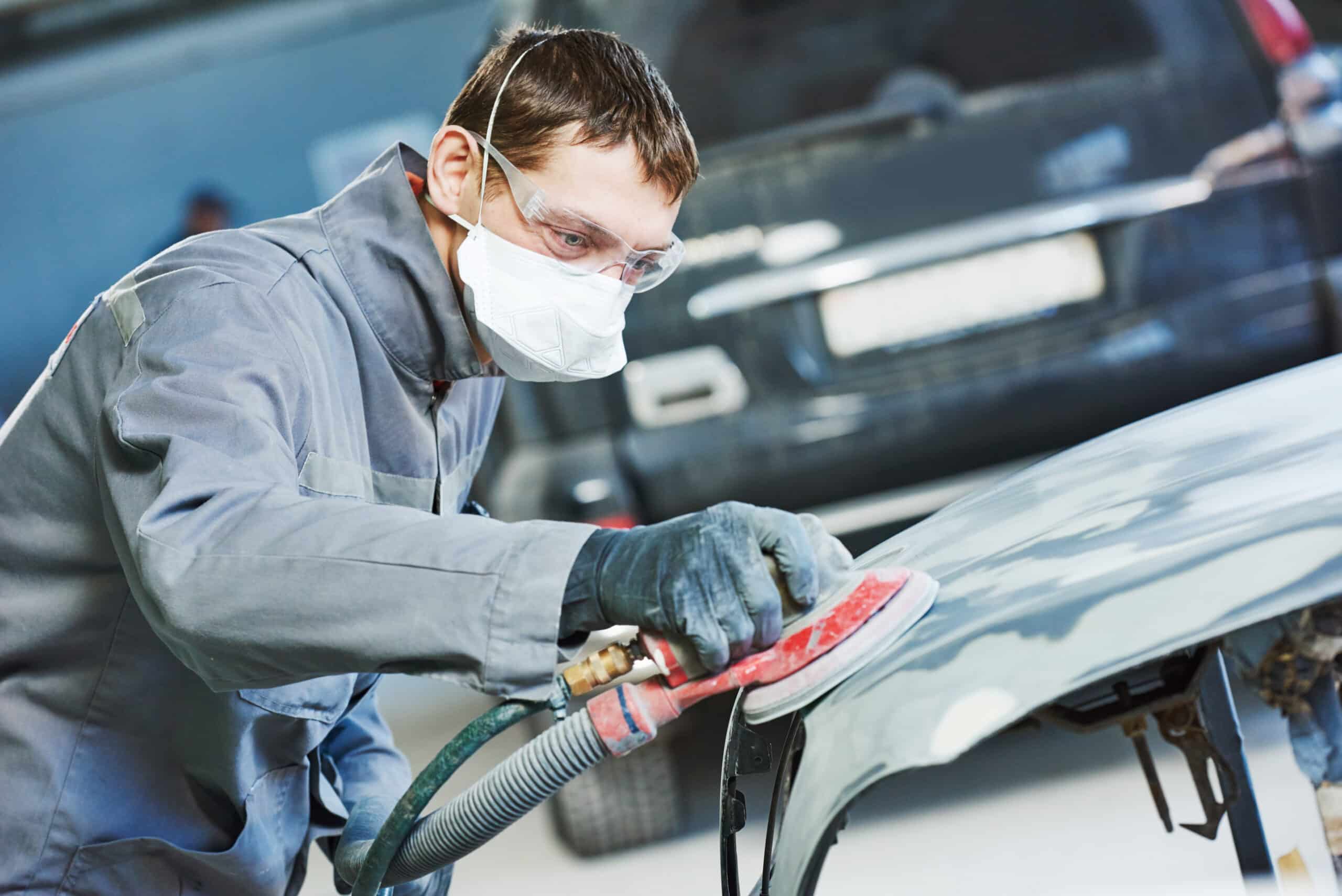Restore, Repair, and Redefine What a Vehicle Can Be
Job Overview
Autobody and Collision Technicians repair and restore vehicles after damage from collisions, weather, or wear and tear. This includes working on structural and body components, surface finishing, glass replacement, and interior restoration.
Technicians may specialize in areas like frame straightening, refinishing, surface preparation, and damage appraisal. The role blends technical skills with craftsmanship and attention to detail.

Demand Outlook
The demand for Autobody and Collision Technicians is expected to remain steady over the next several years. In Nova Scotia, a significant portion of the current workforce is aged 55 or older, which means retirements will open up more job opportunities. This trade is also known for its entrepreneurial potential — many technicians are self-employed or operate their own shops. Most jobs are full-time, permanent positions offering strong income potential.
Education & Credentials
Certification
Autobody and Collision Technician is a compulsory certified trade under the Apprenticeship and Trades Qualifications Act in Nova Scotia. You must be certified to work in this trade.
Training Provider
Nova Scotia Community College — Motor Vehicle Body Repair
This program teaches welding, structural repairs, surface preparation, frame alignment, and refinishing techniques. Students also learn to use electronic estimating tools and paint-matching systems.
Regulating Body
Nova Scotia Apprenticeship Agency
2021 Brunswick Street, PO Box 578, Halifax, NS B3J 2S9
Phone: 1-800-494-5651 / (902) 424-0717
Email: apprenticeship@novascotia.ca
Essential Skills
- Problem solving
- Digital
- Communication
Watch the Career in Action
Education Summary
Certification
Autobody and Collision Technician is a compulsory certified trade under the Apprenticeship and Trades Qualifications Act in Nova Scotia. You must be certified to work in this trade.
Training Provider
Nova Scotia Community College — Motor Vehicle Body Repair
This program teaches welding, structural repairs, surface preparation, frame alignment, and refinishing techniques. Students also learn to use electronic estimating tools and paint-matching systems.
Certification Required
Yes, certification is required for this career.
Regulatory Body
- Name: Nova Scotia Apprenticeship Agency
- Phone: 1-800-494-5651 / (902) 424-0717
- Email: apprenticeship@novascotia.ca
- Website: https://www.nsapprenticeship.ca/
Typical Tasks & Duties
Autobody and Collision Technicians often:
- Assess and plan repairs based on damage reports
- Remove, repair, or replace damaged panels and structural parts
- Straighten bent frames and unibody structures using alignment equipment
- Fill dents using body filler or soldering tools
- Sand, file, grind, and prepare surfaces for refinishing
- Mask and paint surfaces, blending and matching colours precisely
- Repair or replace windows, windshields, and interior parts
- Perform final inspections and test drives to ensure repairs meet manufacturer and safety standards
Job Requirements & Regulations
- Certificate of Qualification is mandatory in Nova Scotia.
- Must complete apprenticeship and pass certification exam.
Programs Offered
Related Roles
Future Trends & Industry Impacts
- Increased use of aluminum and composite materials is changing how technicians repair and refinish vehicles.
- Advanced safety and sensor systems (ADAS) require technicians to adapt to new calibration standards.
- Technicians who stay current with repair technologies (like plastic welding, aluminum repair, and EV body components) will be in highest demand.
